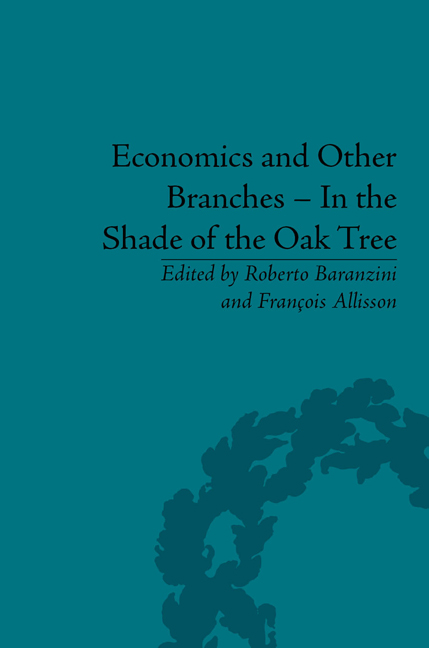Book contents
- Frontmatter
- CONTENTS
- List of Contributors
- List of Figures and Tables
- Introduction
- Pascal Bridel's Bibliography (up to 2013)
- Part I Léon Walras's Economic Thought
- Part II The Spreading of Thought
- Léon Walras's Reception
- The Lausanne School
- French Matters
- Cambridge UK
- Part III Monetary Theory
- 14 Financial Stability: The Role of Central Banks
- 15 The Fisher Relation in the Great Depression and the Great Recession
- 16 Endogenous Money in an Elementary Search Model: Intrinsic Properties versus Bootstrap
- 17 Digression on the Relations between Anthropology and Economics on the Topic of ‘Primitive’ Currencies: A Page in the History of Thought
- Part IV Methodology
- Part V Economics and Humanities
- Economics and Social Sciences
- Some Insights from Visual Arts
- Part VI Economics and Civil Society
- Notes
- Index
15 - The Fisher Relation in the Great Depression and the Great Recession
from Part III - Monetary Theory
- Frontmatter
- CONTENTS
- List of Contributors
- List of Figures and Tables
- Introduction
- Pascal Bridel's Bibliography (up to 2013)
- Part I Léon Walras's Economic Thought
- Part II The Spreading of Thought
- Léon Walras's Reception
- The Lausanne School
- French Matters
- Cambridge UK
- Part III Monetary Theory
- 14 Financial Stability: The Role of Central Banks
- 15 The Fisher Relation in the Great Depression and the Great Recession
- 16 Endogenous Money in an Elementary Search Model: Intrinsic Properties versus Bootstrap
- 17 Digression on the Relations between Anthropology and Economics on the Topic of ‘Primitive’ Currencies: A Page in the History of Thought
- Part IV Methodology
- Part V Economics and Humanities
- Economics and Social Sciences
- Some Insights from Visual Arts
- Part VI Economics and Civil Society
- Notes
- Index
Summary
The so-called Fisher relation plays a central part in today's workhorse models of monetary policy and it oft en finds a place in general discussion of such issues far beyond the boundaries of the academic literature. It had been making appearances in monetary debates long before the Great Depression began, indeed long before Irving Fisher himself discussed it with such skill and thoroughness in 1896 that his name became firmly and perpetually attached to it. Even so, this idea's specific place in macroeconomics has changed considerably over the years. This essay explores the remarkable differences between the roles it played in the late 1920s and early 1930s on the one hand, and in the last decade or so, on the other. It also sketches an explanation for these differences in terms of the more general evolution of macroeconomics over the intervening years. In short, it presents a brief case study of the reciprocal interaction between the evolution of economic ideas and economic events which makes, or at least ought to make, its own history integral to the study of economic analysis.
The Fisher Relation
The phrase Fisher relation covers more than one idea. Nowadays, it is routinely used to denote a systematic tendency for variations in the expected inflation rate to be reflected – fully, it is usually assumed – in the difference between market rates of return expressed in units of current and constant purchasing power respectively.
- Type
- Chapter
- Information
- Economics and Other Branches – In the Shade of the Oak TreeEssays in Honour of Pascal Bridel, pp. 191 - 204Publisher: Pickering & ChattoFirst published in: 2014



